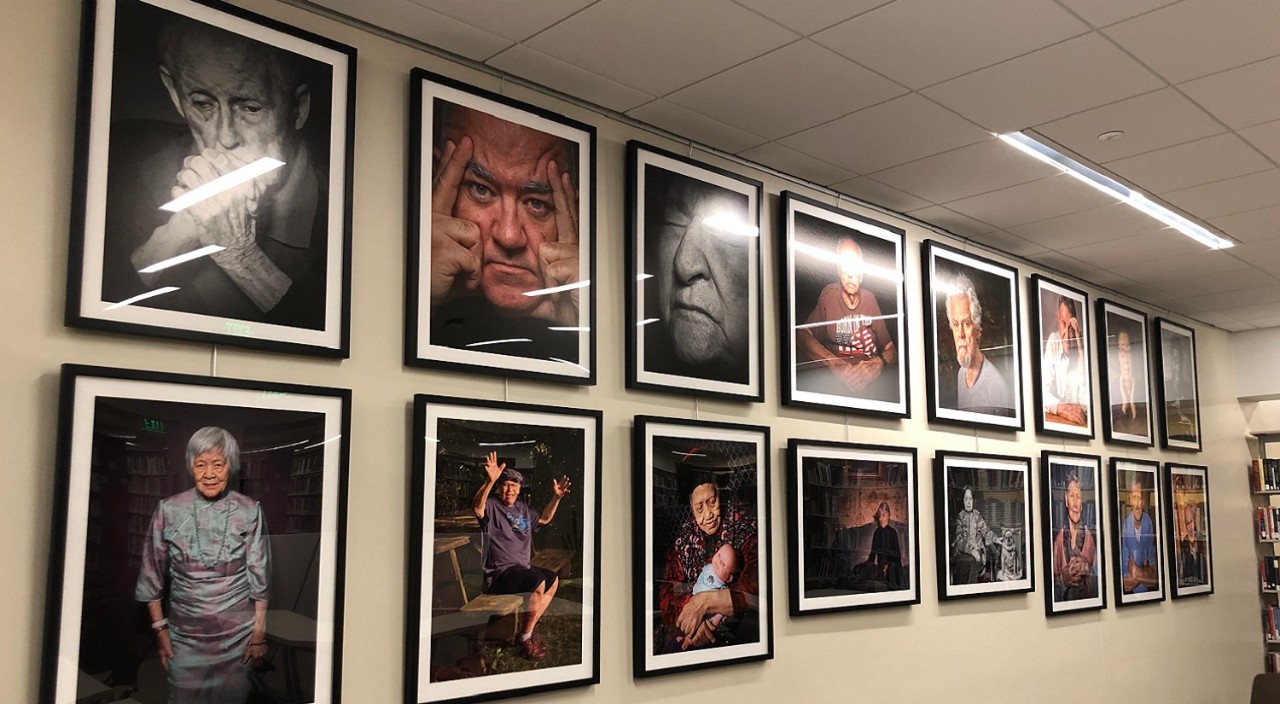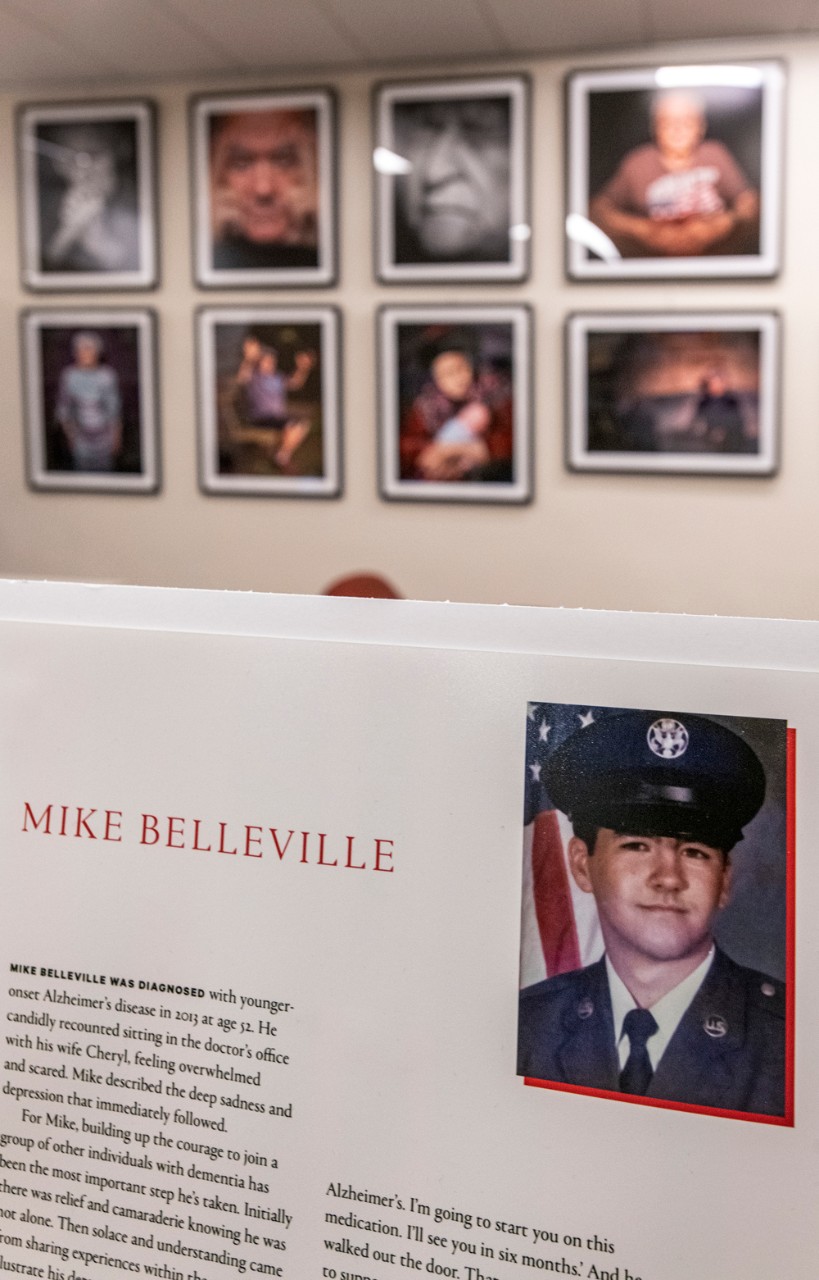An evocative exhibit of portraits now showcased at Boston College juxtaposes images of individuals living with dementia with younger photographs of the subjects, accompanied by brief narratives about their lives. Created by photographer Joe Wallace, “The Day After Yesterday: Portraits of Dementia” delves into multifaceted aspects of dementia, including physical, emotional, community, and health care issues.
The series of 28 photographs is on display through October 29 in the library of the BC School of Social Work (a supporter of the project), and in the O’Neill Library Reading Room.
Wallace’s goal is to destigmatize those living with dementia, to use empathy as a means for connection and understanding, and to tell a more complex and complete story of those living with the disease and its effect on their families and loved ones.
“A diagnosis of Alzheimer’s disease or another type of dementia can, in and of itself, be quite devastating for individuals and their loved ones, but the stigma that shrouds this disease often strips individuals of their personhood and isolates them, making it that much more so,” said BCSSW Associate Professor Christina Matz. “My colleagues and I felt it was important to bring this exhibit to BC because art can be such a beautiful medium through which to open up a conversation.






